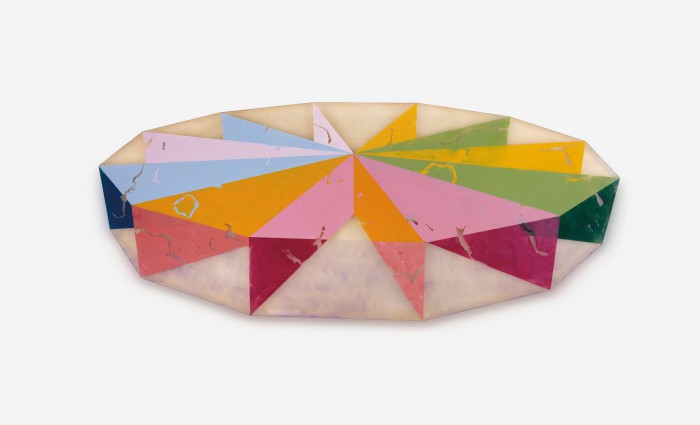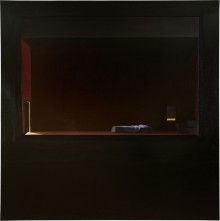Ronald Davis
Spoke 1968

© Ronald Davis. Reproduction of this image, including downloading, is prohibited.
In the mid 1960s, a number of artists began to expand beyond traditional media to consider the aesthetic possibilities of polyester resin. California artist Ronald Davis found that resin could be used as a painting medium. To make Spoke, he constructed a Formican mold and then brushed in layer after layer of pigmented resin. Tears and scratches in the various geometric area allow the colors beneath to show through, drawing attention to the additive layers of which the painting is made. Because Davis built up the substance as he formed the image, there is no separation between image and support; color and brushstroke are contained within the translucent substance of the piece rather than applied to the surface. This enhances its two-dimensionality, while the imaged—blades fanning out from a central point to form a geometric solid—is rendered in perspective.





